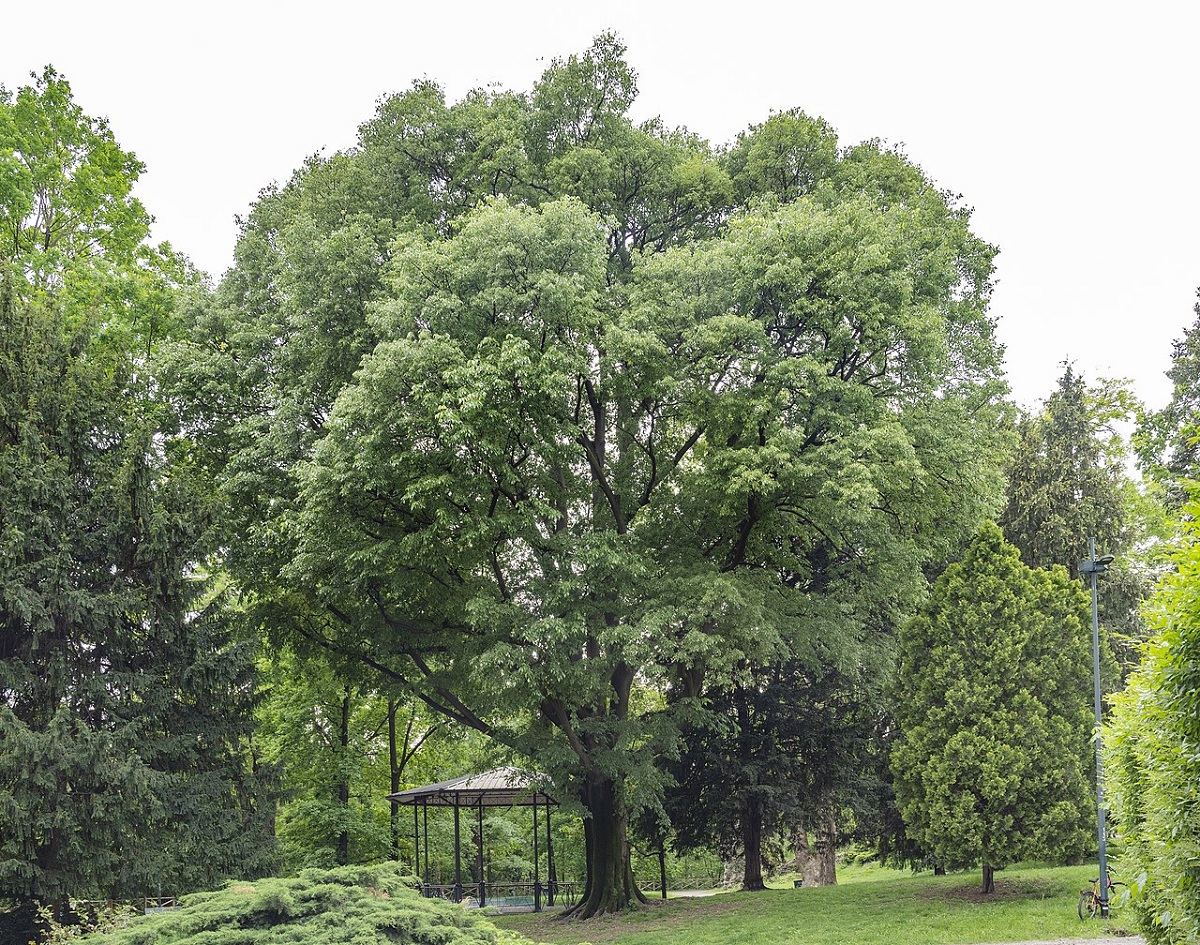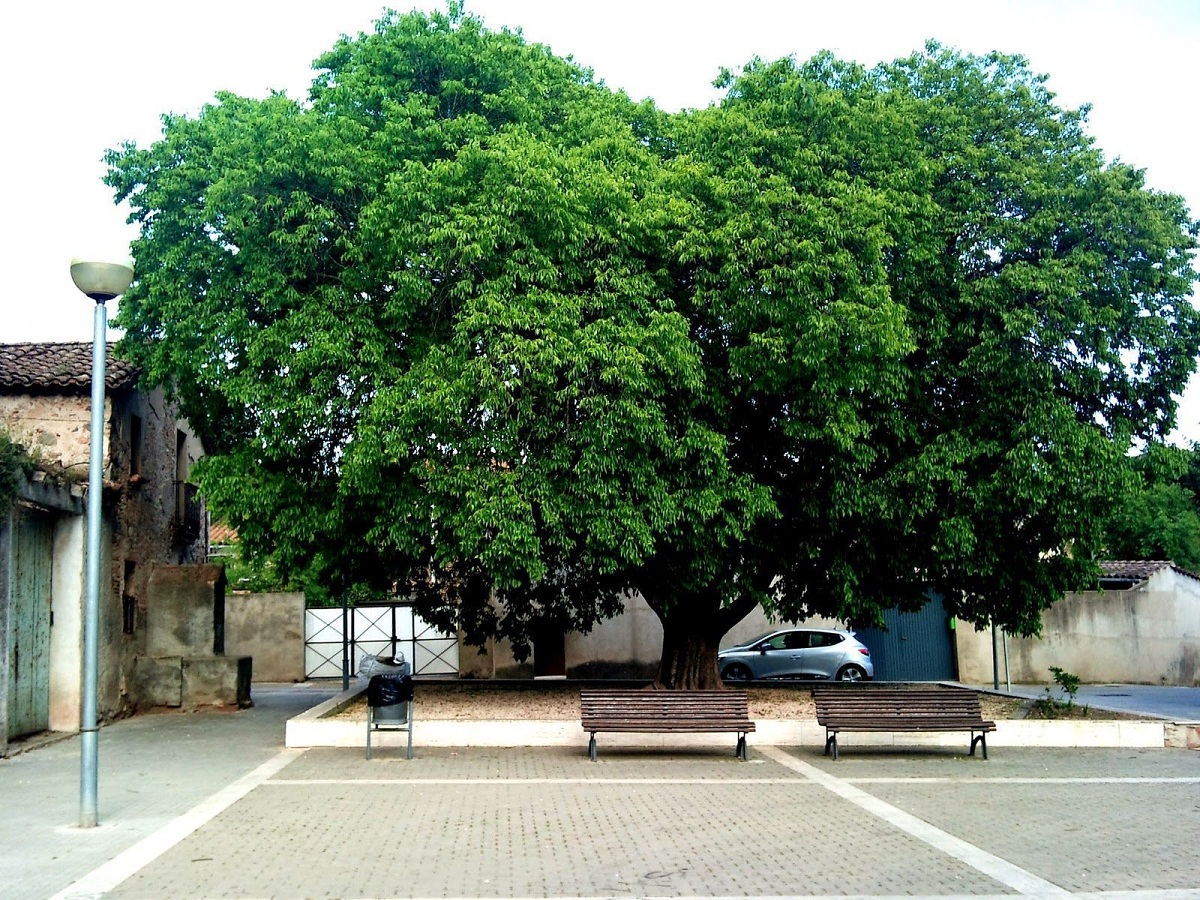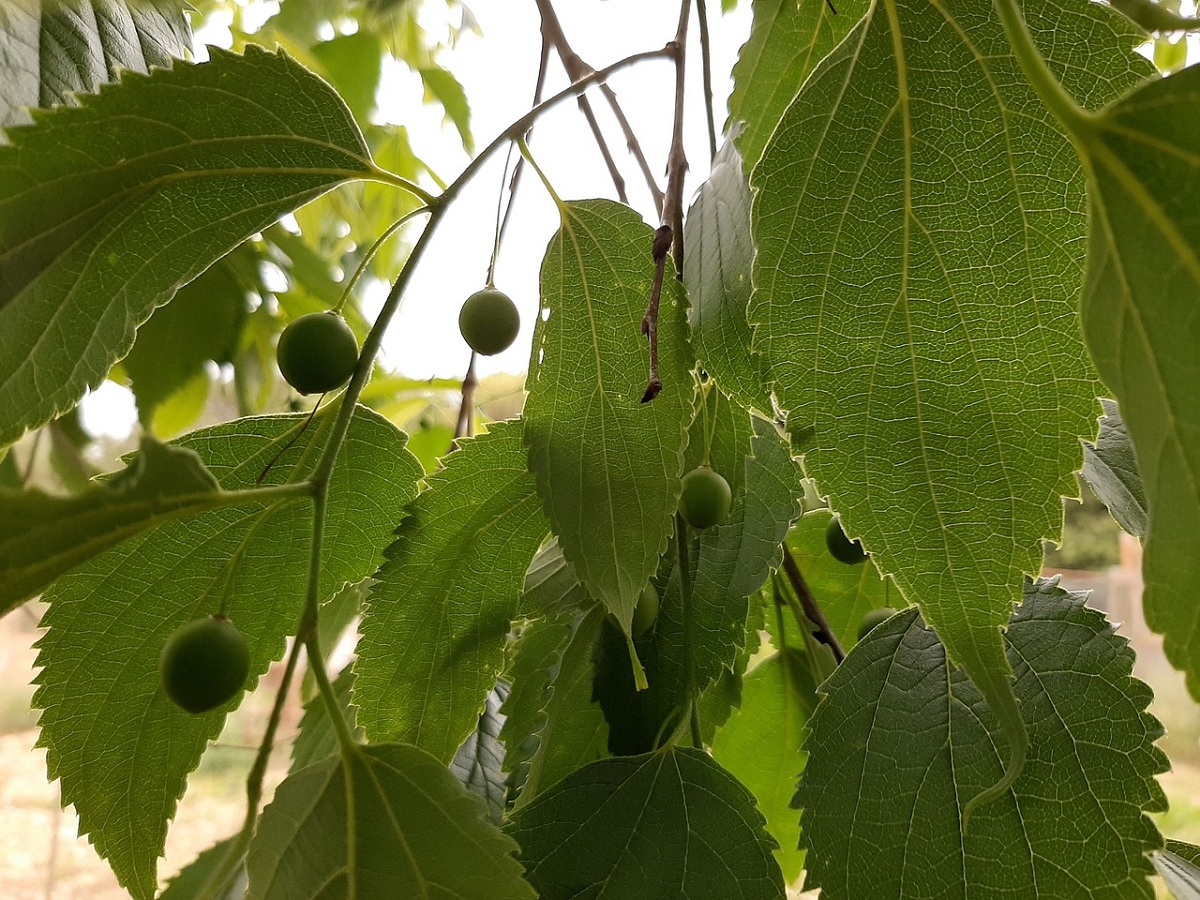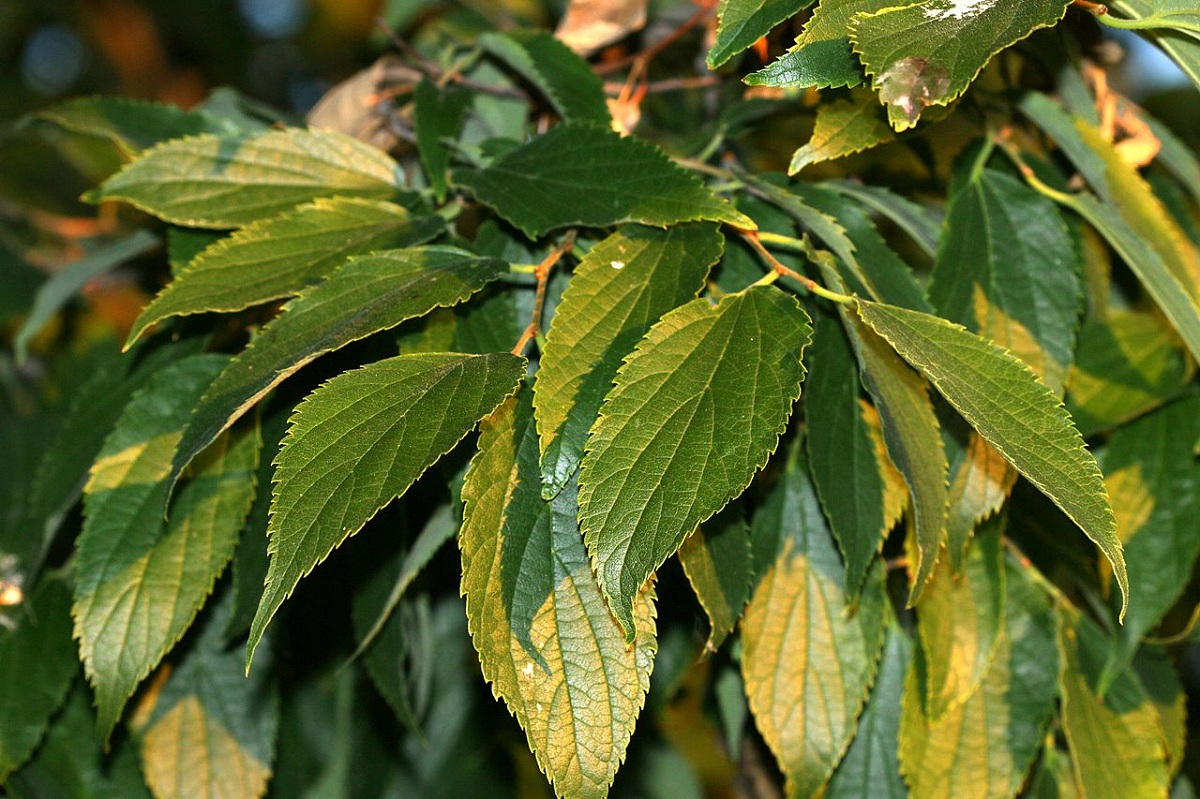
One of the trees within the Cannabaceae family and the Celtis genus is the hackberry. It is a tree native to temperate zones that can be found on almost all continents. It is known by the common name of hackberry, but also by other names such as Latonero, Lodoño, Aligonero, Almecino, Lodón, Lidón and Lironero. They are trees with a wide and rounded crown that usually reach up to 25 meters in height. They tend to grow fast and have a long life, which is why they are used as trees to shade gardens and in streets or public parks. It is necessary to know what the care of the hackberry is so that it develops well.
Therefore, in this article we are going to tell you all the characteristics and care of hackberry.
Key features
They have a wide round crown and they can reach up to 25 meters in height. Its leaves are lanceolate, green in the upper part and transparent in the lower part. They produce small axillary flowers and produce edible spherical fruits.
They are fast-growing, long-lived trees (300 to 600 years) and are used as shade trees in gardens, public streets, and parks. Its wood is very suitable for making tools. Due to its deep roots, shrubs can be planted under its feet to provide shade.
It is native to southern Europe, northern Africa and Asia Minor. Hackberry lives throughout the Mediterranean, from sea level to 1.200 meters above sea level. It is isolated from the world in torrents and close to the source and the reservoir (it never forms a forest). Among Catalan farmers, it is a tradition for the family heirs to plant hackberry at birth.
Hackberry belongs to the Ulmus family. It is a deciduous tree with a height of 20 to 25 meters, the trunk is erect and round, and the bark is gray, similar to beech, without obvious scars. The spherical cup can grow to a large size. It has deciduous, ovoid or lanceolate leaves, with teeth on the edges, long curved ends and asymmetric bases.
Fruits called hackberry or hackberry with a sweet pulp and pleasant flavor, are used in popular medicine and are vital for fauna and are ideal for children to observe and play. This wood is of high quality and has a wide range of uses, especially in Catalonia, where it is used for the manufacture of forks. It inhabits ravines, slopes and coastal areas of rivers and streams, it is known as a kind of mixed Mediterranean forest, avenues and elm trees, but always in a temperate climate.
Hackberry uses
It is not common for it to form in the jungle, no matter what kind of clay properties it has, it is more noticeable than anything in fresh loose soil. It's a tree widely used in private and public gardens, and it is also an arrangement tree for roads and streets. Provides a nice, dense shade. In spring, summer, and early fall, its dense green leaves are highly ornamental.
Even in leafless winter, it is very attractive. The deciduous leaves reveal the beauty of the hackberry, the smooth gray trunk and the endless small branches that form a wide canopy make it a beautifully structured tree.
Siembra
Water young and newly transplanted trees frequently, and once established in the ground, watering can keep the distance. Adult hackberry plants can last longer without frequent watering because they have deep roots, allowing them to reach moisture in the soil. Hackberry reproduces through seeds and spikes, and its ability to form on rocky soils makes it very useful for improving and preserving degraded lands. The steps to plant hackberry are as follows:
- Select the seeds or ears of the hackberry and separate the plants from each other.
- Place the crop in a sunny location.
- Use well-draining limestone soil.
- Water once or twice a week to keep in moisture.
- Be careful with the branches so as not to entangle them and hinder the development of the plants.
Hackberry care
Hackberry likes cool, slightly damp places, but it can withstand drought well. Can live more than 500 years. It is very suitable for group formation. It is arguably the most suitable medium for slow-growing urban shade trees because it is resistant to pollution, free from parasites and diseases.
In addition, its sustainability has also been recognized. Hackberry can grow in sunny areas and in many types of soil, from dry, clay soils to less fertile soils. This tree grows best in well-drained, moist soils.
Plants that grow in alkaline soils are affected by their growth and are usually shorter and slower. This type of tree, like hackberry, is ideal for stressful urban areas because they handle well in this environment, so they can grow normally.
It can be easily propagated by seed; The problems that these types of trees usually have during the growth process are related to the ability of their branches to become entangled during the development of the tree. Hackberry can also be propagated by cuttings in the fall and rooting them in a high-quality substrate containing coarse sand to promote drainage. Place the cuttings in a cool place and keep the soil moist until they take root.
It blooms between April and June in spring, depending on the temperature, its flowers are small and solitary, little obvious, sometimes they are hermaphrodites, they appear in the axils of the leaves of young shoots, they pass through long petioles.
Maintenance
Due to the type of tree of the hackberry genus, it does not need to be pruned, only when it is absolutely necessary and it cannot bear the pruning of thick branches well. If necessary, it is best to trim the branches when they are still good and then treat cuts or wounds on the plants with antifungal products.
Hackberry can become infected with many diseases because it is under pressure from the environment, weather conditions or soil. If it grows in a healthy environment, but is also exposed to drought, cold or high temperatures, it will become an ideal place for pests to multiply. Pests that attack hackberry include fire blight and rust.
I hope that with this information you can learn more about the care of hackberry and its characteristics.


